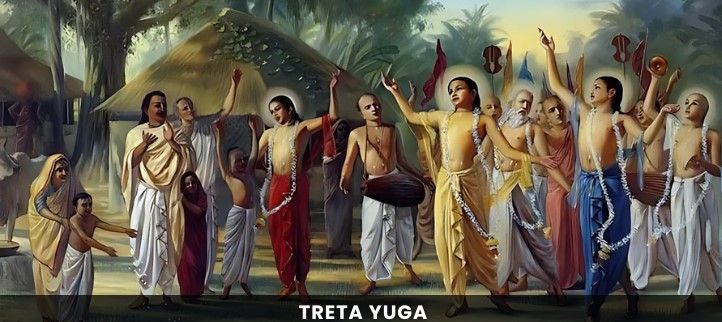
The Lauhitya Kingdom, shrouded in the mists of antiquity, occupies a fascinating, albeit fragmented, space in the historical and mythological landscape of ancient India. Mentioned in revered texts like the Mahabharata and steeped in local lore, Lauhitya kingdom, situated on the banks of the mighty Brahmaputra River (also known as the Lohitya), offers a glimpse into the political and cultural dynamics of Eastern India during a formative period. While concrete historical evidence remains scarce, the interwoven threads of mythology, geographical hints, and scattered references paint a compelling, if incomplete, picture of this enigmatic realm.
Mythological Roots and Geographic Location:
The Lauhitya Kingdom finds its place in both Dwapara and Treta Yugas, epochs described in Hindu mythology. This places its existence in a time considerably distant from known historical periods, adding to the challenge of definitively placing it within a chronological framework. The kingdom's location is primarily linked to the Brahmaputra River, specifically its eastern stretch. The river itself, revered as the Lohitya, lends its name to The kingdom, emphasizing its crucial role in the region's identity and sustenance.
Today, the Lohit district in Arunachal Pradesh is widely believed to hold remnants of this ancient kingdom. This region, characterized by its rugged terrain and the meandering Lohit River, aligns with the geographical descriptions found in ancient texts. The presence of various tribal communities, particularly Kiratas, along the borders of Arunachal Pradesh and Assam, further strengthens the connection to the Lauhitya kingdom, as these tribes are mentioned in relation to the region in ancient literature.
Political Landscape and External Relations:
The Mahabharata provides glimpses into the political scenario of the Lauhitya Kingdom. During Yudhisthira's Rajasuya sacrifice, a significant ritual demonstrating imperial authority, the Pandava brothers embarked on military campaigns to collect tribute from various kingdoms. Both Bhima and Arjuna are mentioned as having visited the Lauhitya region for this purpose.
Arjuna's campaign is described as a successful conquest, where he defeated the Kshatriyas of Kashmira and King Lohita before extracting revenue from Lauhitya. This suggests a period of either independent rule or vassalage to a larger power like Kashmira. The mention of King Lohita indicates a local ruler, further confirming the existence of a structured political entity.
Bhima's campaign, on the other hand, involved a series of battles against various rulers before reaching Lauhitya. These included King Mahaujah of Kausika-Kachchha, Paundraka-Vasudeva of Pundras, and rulers of Vanga and Suhmas. This implies a complex web of interconnected kingdoms and chiefdoms in the eastern region, with Lauhitya being a significant target for tribute collection. The subjugation of Mlechchha tribes, often associated with those outside the established Aryan kingdoms, also suggests the kingdom's involvement in managing the diverse populations inhabiting its periphery.
The presence of Naga rulers like Lohita near Kashmira, as mentioned in the Mahabharata, adds another layer to the understanding of the region's political landscape. While the connection between this Lohita and the Lauhitya kingdom remains unclear, it points to the prevalence of Naga influence in ancient India and their potential interaction with the Lauhitya kingdom.
Administration and Society:
While direct details about the administration of the Lauhitya kingdom are scarce, we can infer certain aspects based on the available information. The presence of a king, as evidenced by the mentions of King Lohita, suggests a monarchy. The need for tribute collection implies a system of governance capable of enforcing taxation and extracting resources. The mention of diverse tribes, including the Kiratas and Mlechchhas, highlights a heterogeneous society with potential variations in customs and traditions.
The kingdom's location along the Brahmaputra River would have been strategically crucial for trade and communication. The river served as a vital waterway, connecting the region with other parts of India and facilitating the exchange of goods and ideas. The fertile land surrounding the river would have supported agriculture, likely forming the backbone of the kingdom's economy.
Religious and Cultural Significance:
The Lohitya River holds immense religious significance. It is considered sacred, and the region around it is associated with various mythological figures and events. The presence of "Urvasi," a sacred region named after the Apsara Urvasi, further emphasizes the spiritual importance of the river and its surroundings.
The association of Bhargava Rama with the Lauhitya kingdom adds another layer to its religious significance. The legend of Bhargava Rama building a pilgrimage spot in the region suggests its importance as a center of religious activity. This, coupled with the mentions of other sacred sites, indicates that the Lauhitya kingdom was likely a place of pilgrimage and spiritual significance for people across the region.
Conclusion:
The Lauhitya Kingdom remains a fascinating enigma, its story pieced together from fragments of mythology, geographical clues, and scattered historical references. While a comprehensive understanding of its history, Administration, and society remains elusive, the available evidence offers a compelling glimpse into the political and cultural landscape of ancient India's eastern frontier. The kingdom's association with the Brahmaputra River, its interactions with neighboring kingdoms, and its religious significance all contribute to its unique place in the narrative of ancient India. Further archaeological research and scholarly investigation may yet unveil more secrets of this intriguing kingdom, enriching our understanding of its role in shaping the history of the region. The Lauhitya Kingdom serves as a reminder of the rich tapestry of ancient Indian History, with its many untold stories waiting to be discovered.